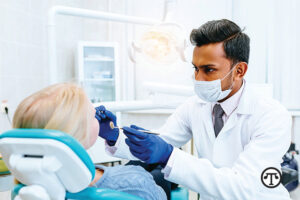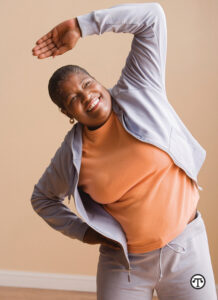MCA IS CELEBRATING OUR 20 YEAR ANNIVERSARY WITH HF 20/20
It has been 20 years since Ocala’s record-breaking public art project and auction, Horse Fever. For five months the public delighted in our herd of 53 horses, many of which still adorn the streets of Ocala. Artists and a generous business community came together to ultimately raise over $1.5 million for the arts and 27 other local charities, founding the Marion Cultural Alliance. We proudly reflect on a 20-year period of growth and consistent support through programming, grants, and scholarships enhancing art and cultural programs across every medium in Ocala/Marion County.
In celebration, we are creating a new artistic opportunity for artists and patrons. You could be among a select group commissioned to paint and embellish a life-sized horse for this celebration of our community.
Regional artists from Florida will be selected to paint and embellish one of 20 horses that will be displayed publicly in early 2021.
Interested in acquiring an anniversary horse? Please contact me or call 352.369.1500.
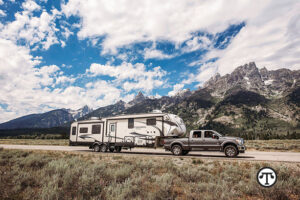 Unprecedented RV rental demand from cautious travelers has made owning an RV the go-to entrepreneurial venture of the year
Unprecedented RV rental demand from cautious travelers has made owning an RV the go-to entrepreneurial venture of the year
(NAPSI)—Millions of Americans who own an RV have it parked in their driveway or a storage facility for the better part of the year. With many families wary of airplanes and hotels these days, it may be time to consider renting your rig to make some serious cash.
According to peer-to-peer RV rental marketplace RVshare, RV bookings have reached unprecedented levels of demand, increasing more than 1,600% since the beginning of April and already tripling 2019 figures. As a result, RV owners are poised to capitalize on the surge of families discovering the unique and adventurous nature of RV travel for the first time.
In fact, the average RV owner who rents on the RVshare platform can earn up to $60,000 a year in rental income. The amount of money you can make from renting your RV can vary based on the type of vehicle you own. Continue reading
 “The Shadow Girl” by Misty Mount
“The Shadow Girl” by Misty Mount
(NAPSI)—“A powerful fantasy that combines a coming of age theme with insights into changing family relationships, the impact of past worlds on present lives, and a shy girl’s unexpected changes.”—Midwest Book Review
Shy, thirteen-year-old Zylia has always known she was different. She’s disappearing from this world and doesn’t know how to stop it. Then she stumbles across a family mystery surrounding the disappearance of her great-aunt Angelica years earlier. During her quest to unravel the mystery, Zylia discovers she’s able to cross the boundary and enter the “in between” world. Now, it’s up to Zylia to save herself before she’s trapped “in between” forever. Purchase at https://amzn.to/2V4riZi.
“Median Gray” by Bill Mesce Jr.
At a time when New York’s mean streets were their meanest, one NYPD detective at the end of his career takes one last chance to correct a 20-year-old injustice, and another cop at the beginning of his career tries to stop him before a police department already scarred by corruption investigations takes another hit.
“Smart, gritty, and authentic, ‘Median Gray’ delivers a crackling tale complete with complex and damaged characters, and a keen eye for what cops know and think.”—SFPD Sgt. Adam Plantinga, author of “400 Things Cops Know” and “Police Craft”. Purchase at https://amzn.to/3epE78e. Continue reading
Gary Severance, DDS, Executive Leader of Professional Relations, Henry Schein Dental
(NAPSI)—As dental offices re-open across the nation, patients may be in for some pleasant surprises. For one thing, you can rest assured that there will be new protocols that help keep your dental visit safe and comfortable.
What Dentists Are Doing
Enhanced patient protection measures include: All dental team members have upgraded their protective gear. This includes appropriate personal protective equipment (PPE) for all appointments. Between patients, dentists and their team will meticulously clean and disinfect surfaces and sterilize instruments.
Many dentists also offer a virtual waiting room. Patients can check in via text message and wait, if necessary, somewhere outside the clinic, such as in a car.
Patients and dental professionals are screened for COVID-19 symptoms and risk factors before each appointment.
To help make the air quality sanitary, many dentists have even invested in high-efficiency air purification systems.
What You Can Do
There are also certain steps you the patient can take to help keep everyone safe as well.
Here, from the experts at the American Dental Association, are some useful facts and tips:
Before your appointment, your dental office may call you to ask about your current health and travel records.
You may also be asked to limit the number of people you bring to the appointment. That could mean leaving your children at home or allowing older children go to the office alone while a parent waits outside.
At your appointment: Be sure to wear a mask, even if it’s not required and especially if your dentist’s office is in an area where one is required. When you get to the dental office, you may be asked to wait outside until they’re ready for you. This will reduce the number of people in the office and reduce the amount of time you’re exposed to other people. When you enter the office, be prepared to have your temperature taken or other health test. Inside the office, things people tend to touch in the waiting room—such as toys or magazines—may no longer be there. Hand sanitizer, masks, and gloves may be made available to you.
Once you’re in the dental chair, you may notice some things look different from the last time you were there. The dentist may have covered the computer’s keyboard with a disposable cover so it can be easily cleaned between patients, for example. Your dentist may also be using different protective equipment than you’ve seen at previous appointments, including different masks, face shields, gowns, gloves, and goggles.
After your appointment, the dental team members will thoroughly clean the area with disinfectant. If you start feeling symptoms of COVID-19 within 14 days of your appointment, contact the dental office. You may have already been carrying the virus at the time of your appointment, so anyone who came into contact with you during that time could be at risk for getting sick, too.
Learn More
For further hints from the dental professionals who get equipment and information from Henry Schein, the world’s largest provider of health care solutions and services to office-based dental and medical professionals, go to www.henryschein.com/customerstories to watch Road to Recovery videos on how dentists are working on ways to reopen safely for everyone.
(NAPSI)—You may be feeling stressed during these challenging times, but stress can affect your physical and emotional health. Learn how to manage your stress so that you can stay healthy and cope with life’s challenges.
What is stress?
Stress is how your brain and body respond to a challenge. Any type of challenge—such as performance at work or school, a significant life change, or a traumatic event—can be stressful.
Your body reacts to stress by releasing hormones. These hormones make your brain more alert, cause your muscles to tense, and increase your pulse. In the short term, these reactions are good because they can help you handle the situation causing stress. This is your body’s way of protecting itself. However, too much stress all at once or over time (chronic stress) can threaten your health.
Everyone experiences stress from time to time, but your response to stress may be different. Some people may experience headaches or an upset stomach. Others may get muscle aches or chest pain. Stress can also disturb your sleep, reducing your energy and making it tough to keep active when awake. In addition, stress can lead to weight loss or weight gain. Over time, stress can contribute to serious health problems, such as heart disease, high blood pressure, diabetes, and other illnesses, including mental disorders such as depression or anxiety.
Managing stress through fitness, healthy eating, and relaxing activities
Regular physical activity, healthy food and beverages, and other positive activities may help you relieve stress and stay on track with improving your health.
Physical activity may help you start feeling better right away. It can help boost your mood and improve your sleep. In addition, physical activity adds to strength and stamina, which can help you manage stressful situations.
Physical activity doesn’t have to mean long workouts. Short workouts, such as a set of sit-ups or stretches, can help relieve stress. Try adding a new activity to your daily routine, such as walking around the block or up and down stairs a few times. Partner with a friend or neighbor to help you stay on track.
Consuming healthy meals, beverages, and snacks in moderation can be another way to protect yourself against stress. Preparing or purchasing foods such as whole grains, fruits and vegetables, low-fat proteins, and foods without added sugars or fats can give you energy and keep you feeling good.
Learn to recognize what triggers your stress response and identify ways to help you manage it. Other ways to help you manage stress may be to meditate, engage in your favorite hobby, limit your time on social media, volunteer, or connect with people who can provide emotional support.
Visit the National Institute of Diabetes and Digestive and Kidney Diseases website to learn more about physical activity, healthy eating, adequate sleep, and other behaviors to help you manage your stress. Visit the National Institute of Mental Health website to learn more about stress.
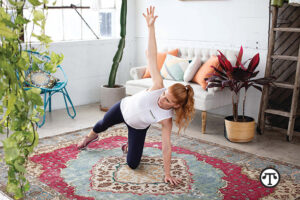 by Samantha Clayton, certified personal trainer
by Samantha Clayton, certified personal trainer
(NAPSI)—For many people, social distancing brings concern about summer plans. In previous years, summertime was when families planned their vacations. The kids would be out of school, the weather could be fantastic, and the days are longer—allowing optimal time to venture to new places, catch some sun and spend more time with friends and families.
Since you may have already been spending a lot more time with your family then you ever imagined due to coronavirus outbreak, you may be looking for ways to keep your family entertained. Between possibly working from home, managing your kids’ schoolwork and maintaining a functioning household, this time probably hasn’t felt much like a vacation.
Social distancing guidelines are likely to remain in effect in many places during the summer. Activities and entertainment options, lodging, and dining will be affected. The good news is, you really don’t have to totally give up on enjoying the summer at home with your family. Here are some tips to make your staycation exciting for the whole family: Continue reading
 (NAPSI)—According to Darrell Smith, executive director of the International Window Film Association, window film makes a lot of sense for homeowners eager to save money on their energy bills.
(NAPSI)—According to Darrell Smith, executive director of the International Window Film Association, window film makes a lot of sense for homeowners eager to save money on their energy bills.
“Solar-control films can block as much as 80 percent of the solar heat coming through glass into a building, decrease the heat load on the air-conditioning system and reduce energy costs,” Smith says.
With more people working and studying from home, window film allows in abundant natural sunlight while blocking 99 percent of the sun’s harmful UV rays to better protect the skin (from possible cancer) and eyes (from cataract development), while reducing the fading of floors and furnishings. Smith estimates that 40 to 60 percent of color fading is caused by UV exposure. Windows may also be upgraded for safety, as window film helps to hold glass pieces together if the window is impacted and broken.
For even a 3,000 square foot home, window film may be installed in a day or less with minimal disruption. Window film installers clean the glass before installation, keep the work space clean and practice safe contact as recommended by the Centers for Disease Control. Find a local dealer/installer at www.iwfa.com.
 (NAPSI)—If you’re looking for a healthy start to your day, give California Sweet potato Blueberry Yogurt Muffins a try. Chock full of nutrient-dense ingredients such as blueberries, yogurt and whole wheat, these powerhouse muffins have a secret ingredient: shredded California sweet potatoes. A designated superfood, California sweet potatoes are loaded with vitamins, minerals and fiber. Plus, they keep the muffins moist and tender and add just the right amount of sweetness.
(NAPSI)—If you’re looking for a healthy start to your day, give California Sweet potato Blueberry Yogurt Muffins a try. Chock full of nutrient-dense ingredients such as blueberries, yogurt and whole wheat, these powerhouse muffins have a secret ingredient: shredded California sweet potatoes. A designated superfood, California sweet potatoes are loaded with vitamins, minerals and fiber. Plus, they keep the muffins moist and tender and add just the right amount of sweetness.
Bake a dozen (or more) and store in individual bags in the freezer for a healthy portable breakfast the entire household will enjoy.
California Sweet potato Blueberry Yogurt Muffins
Makes 24 regular or 10 jumbo muffins
4 large eggs
1 1/2 c plain yogurt
1/2 c butter, melted
2 tsp vanilla extract
2 c all-purpose flour
1 1/2 c whole wheat flour
2 c shredded sweet potatoes
1 c sugar
1 1/2 tsp baking powder
1/2 tsp baking soda
1/2 tsp salt
2 c blueberries
Preheat oven to 375° F. Coat muffin tins with nonstick spray.
In large bowl, whisk eggs, yogurt, butter and vanilla. In medium bowl, combine flours, sweetpotatoes, sugar, baking powder, baking soda and salt. Mix flour mixture into egg mixture. Gently stir in blueberries.
Divide batter between 24 regular or 10 jumbo muffin cups. Bake until golden brown and set, about 25 minutes for regular muffins or 30 for jumbo.
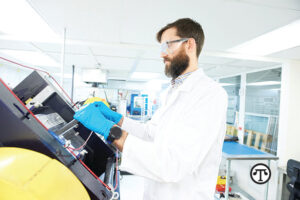 (NAPSI)—Cleaner air can improve public health, maybe even save lives. Fortunately, renewable energy resources—wind, sun, hydropower and the like—are now producing more electricity than coal. That’s where innovative energy storage solutions come in. They help create a cleaner world, encouraging investment into clean, green, renewable energy. To help, engineers and policymakers are increasingly turning their attention to energy storage solutions. New bi-partisan efforts in states such as New York and the Trump administration are in alignment to support new energy storage technologies that drastically improve the economics of wind and solar projects.
(NAPSI)—Cleaner air can improve public health, maybe even save lives. Fortunately, renewable energy resources—wind, sun, hydropower and the like—are now producing more electricity than coal. That’s where innovative energy storage solutions come in. They help create a cleaner world, encouraging investment into clean, green, renewable energy. To help, engineers and policymakers are increasingly turning their attention to energy storage solutions. New bi-partisan efforts in states such as New York and the Trump administration are in alignment to support new energy storage technologies that drastically improve the economics of wind and solar projects.
The global rise in electricity generation from renewable sources has led to increased demand for advanced batteries that can be used to firm up this intermittent supply. This requirement is particularly important in areas where grid connections may be tenuous, unreliable or even non-existent. Additional demand for advanced batteries is presented by grid applications such as peak-shifting and Transmission and Distribution (T&D) capital deferral.
Energy storage systems provide many ways to manage the power supply for a more resilient energy infrastructure, and bring cost savings to utilities and consumers. Batteries allow the use of electricity whenever it’s needed, not only when it’s generated. However, traditional battery economics and performance have not proved helpful as utilities look to increase renewable penetration through long-duration energy storage.
The Problem
One of the challenges to growing a North American energy storage industry, however, has been a dependency on a supply chain of hardware components, metals and chemicals, many of which come from outside North America. As well, metals such as lithium and vanadium used in some batteries are impacted by price volatility and security of supply.
An Answer
Those same risks do not apply to zinc-air batteries. Zinc is abundant and inexpensive, with a significant North American supply. Its chemistry is robust and safe. A zinc-air battery has decoupled energy and power, making it one of the lowest-cost long-duration battery storage solutions available.
A safer, cleaner future requires less polluted air which means replacement of carbon-based power generation with renewable, sustainable sources of electricity. Long-duration, low-cost energy storage systems such as zinc-air will be a key driver to a quicker path towards a greener future. A “bet” on energy storage is a wager that will deliver a cleaner planet that will thrive for current and future generations, suggests Ron MacDonald, president and CEO of Zinc8 Energy Solutions, the leader in zinc-air battery technology, a unique flow battery technology using zinc and air as fuel.
Learn more
You can find further facts and stats on energy storage at www.zinc8energy.com.
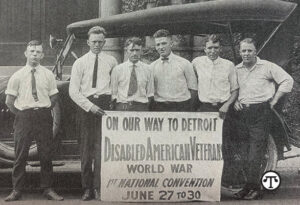 (NAPSI)—From a World War I veteran who lost both legs to a Vietnam vet suffering the effects of Agent Orange to a young Marine with post-traumatic stress disorder finding her way after returning home from Afghanistan—many of America’s veterans live with physical, mental and emotional injuries that impact their lives as a result of military service. They often need support with things such as navigating the complex Department of Veterans Affairs system to access veterans benefits, including health care and education benefits or identifying employment opportunities after military service. And because of their service-connected health conditions, they can be particularly vulnerable during health epidemics and economic downturns.
(NAPSI)—From a World War I veteran who lost both legs to a Vietnam vet suffering the effects of Agent Orange to a young Marine with post-traumatic stress disorder finding her way after returning home from Afghanistan—many of America’s veterans live with physical, mental and emotional injuries that impact their lives as a result of military service. They often need support with things such as navigating the complex Department of Veterans Affairs system to access veterans benefits, including health care and education benefits or identifying employment opportunities after military service. And because of their service-connected health conditions, they can be particularly vulnerable during health epidemics and economic downturns.
Fortunately, DAV (Disabled American Veterans) has been providing a century of care to help disabled veterans of all generations adjust to life back home. For the last 100 years, this nonprofit organization has offered a range of services from assisting veterans in accessing the benefits earned through their service to finding meaningful employment and supporting their families. DAV has continued to evolve and provide new care as veterans’ needs have changed. However, one tradition remains a constant: DAV’s services are provided to veterans and their families at no cost or obligation to them. Continue reading
